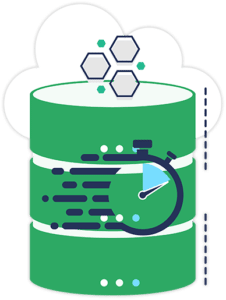AWS recently announced the release of their new infrastructure deployments called Local Zones. With Local Zones, you can deploy your latency-sensitive applications, databases, storage, and similar, near the actual end user.
The latency can go down as low as single-digit milliseconds, which can greatly improve your performance and provide a much smoother experience for your users. Local Zones are extensions of a particular AWS region and operate independently, but are still connected to the nearest AWS region. You can read more about AWS Local Zones on their website.
While the list of Local Zones is long, there are currently some drawbacks when it comes to service availability with AWS if you want to utilize these Local Zones directly from Amazon. AWS RDS, their fully managed database solution, currently only allows deployments in a single Local Zone (Los Angeles). This means that you cannot deploy your database in the many other Local Zones. However, there are ways around this.
With ScaleGrid you are fully able to deploy your databases in any of the available Local Zones using BYOC. We support all of the currently available AWS Local Zones for all our supported databases, including MySQL, PostgreSQL, Redis™*, and MongoDB® Database**.
| Local Zone | ScaleGrid | AWS RDS |
| United States | ||
| Atlanta, US | ✔️ | |
| Boston, US | ✔️ | |
| Chicago, US | ✔️ | |
| Dallas, US | ✔️ | |
| Denver, US | ✔️ | |
| Houston, US | ✔️ | |
| Kansas City, US | ✔️ | |
| Las Vegas, US | ✔️ | |
| Los Angeles, US | ✔️ | ✔️ |
| Miami, US | ✔️ | |
| Minneapolis, US | ✔️ | |
| New York City, US | ✔️ | |
| Philadelphia, US | ✔️ | |
| Phoenix, US | ✔️ | |
| Portland, US | ✔️ | |
| Seattle, US | ✔️ | |
| Asia-Pacific | ||
| Auckland, New Zealand | ✔️ | |
| Bangkok, Thailand | ✔️ | |
| Delhi, India | ✔️ | |
| Kolkata, India | ✔️ | |
| Manila, Philippines | ✔️ | |
| Muscat, Oman | ✔️ | |
| Perth, Australia | ✔️ | |
| Taipei, Taiwan | ✔️ | |
| South America | ||
| Buenos Aires, Argentina | ✔️ | |
| Lima, Peru | ✔️ | |
| Querétaro, Mexico | ✔️ | |
| Santiago, Chile | ✔️ | |
| Europe | ||
| Copenhagen, Denmark | ✔️ | |
| Hamburg, Germany | ✔️ | |
| Helsinki, Finland | ✔️ | |
| Warsaw, Poland | ✔️ | |
| Africa | ||
| Lagos, Nigeria | ✔️ |
This list is correct as of June 28th, 2023.
What are the benefits of hosting in an AWS Local Zone?
As we previously mentioned, being able to reach latency numbers as low as a single digit will greatly reduce the response time from your database and application. This in turn enhances the user experience of your geographically dispersed users, creating a seamless experience with fewer hiccups and lag.
In addition to reducing latency, you can also in some cases see lower data transfer costs, as Local Zones are billed at local transfer rates, rather than inter-region or cross-region rates. The local transfer rates are typically lower than the other, which can be particularly beneficial if your application generates a significant amount of data traffic.
When it comes to compliance and data residency requirements, Local Zones allow you to keep your data closer to your end users or specific geographic locations. This may be necessary to comply with regulatory or industry-specific guidelines. Let’s say you have a healthcare application that collects and processes sensitive patient data. Due to regulatory requirements, you need to ensure that the data remains within a specific geographic region or country. In this case, you can deploy your database in an AWS Local Zone that is located within the desired jurisdiction.
By doing so, you ensure that the patient data is stored and processed closer to the end users or within the specific region, addressing the compliance and data residency requirements. This setup allows you to meet regulatory obligations while taking advantage of the managed database service provided by ScaleGrid.
You can find out more about what Local Zones are on the AWS website.
[clickToTweet tweet=”AWS Local Zones – Deploying Single Digit Latency Databases with ScaleGrid | @scalegridio #aws #localzones” quote=”AWS Local Zones – Deploying Single Digit Latency Databases with ScaleGrid”]
Is there anything else to think about?
While everything sounds great about utilizing Local Zones, there are currently some caveats to keep in mind about specific compute shapes and sizes. Since it’s a recent addition to the different AWS regions, not all shapes and sizes are currently available in each local zone. For example, AWS themselves say that they support “various” instance types in the Local Zones, such as T3, C5d, R5d, and G4dn. And only some Local Zones offer more instance types, such as C5, M5, R5, and I3en.
ScaleGrid’s default compute shapes and sizes may not be available in your requested Local Zone, so our support team will need to help you out a bit to get you up and running on an available instance type and size that suits your needs. We are working on making the deployment on Local Zones a more streamlined process, but rest assured that our service overall is fully compatible. You can expect to be able to deploy most of our supported database types in Local Zones including MySQL, Redis™*, PostgreSQL, and MongoDB® database** with our BYOC service.
I am interested in using AWS Local Zones with ScaleGrid, what do I need to do?
If you want to deploy your database in an AWS Local Zone, create a new, one or log in, to your Scale account and reach out to our support team. They will be able to get you up and running in no time so you can enjoy the full capabilities of an automated and managed DBaaS with cutting-edge features such as automated backups, high availability, and disaster recovery, all with single-digit latency. At this time, only ScaleGrid BYOC deployments are compatible with the AWS Local Zones.
**MongoDB® database on AWS is only available for legacy ScaleGrid customers.




